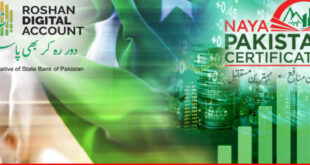The latest federal budget for the fiscal year 2015-2016 has been recently revealed out of which the outlay is 91 per cent higher than what was revised earlier in the fiscal year.
The Finance Minister, Mr. Ishaq Dar presenting the budget 2015-16 to the National Assembly claimed that the budget does include measures with respect to employment, improving the exports of the country as well as focusing on helping the country to achieve industrial growth now as the previous year was more focused towards stabilizing the economy. While work on stability is still likely to continue, the extra step is now going to be taken to stimulate economic growth. For this purpose, for the upcoming year, the targeted rate of growth set by the government is 5.5 per cent, which is expected to reach 7 per cent by the time the tenure of the government ends in 2017-2018.
While the targeted growth rate was missed in the previous fiscal year, questions are recently going to rise regarding whether or not the increased growth rate will be met in the coming year. The reason for missing out on the targeted growth rate for the previous fiscal year was including floods as well as political protests stated by Ishaq Dar, which had kept the country busy for a number of months. While such instances are certainly those which will continue to occur, it could very well mean that the growth rate will again not be met considering the reasons provided. The Finance Minister also stated that the fiscal deficit target set by the nation would be met by the end of the month.
Taking into consideration those belonging to lower income groups, the budget has increased the amount of money to be provided to the Benazir Income Support Program to Rs102 billion for the coming year, which is expected to cover around 5 million families. If such an effort were to be successful, it would certainly be helpful in bringing about some respite for those who would be affected by the program and would help in lifting these families out of poverty. Similarly, rural students have also been awarded with Rs125 million worth of scholarships for the coming year, which could allow the literacy rate in the country to increase as it would make it possible for those belonging to lower income groups to send their children to schools without having to worry about how to allocate the income earned.
A great amount of allocation has also been set aside for public sector development programs in the country. Rs700 billion from the budget has been allocated for this purpose federally whereas Rs814 billion has been allocated for provinces, which bring the total amount allocated for public sector development to Rs1,514 billion.
An additional sum of Rs3 billion has also been set for developing an international airport at Gwadar to further enhance the city as work is already being done to make it an international hub of trade and commerce and to turn the city into one whose economy thrives.
The budget did not fail to take into consideration those areas which have been affected as well as displaced individuals. Security for them and rehabilitation and resettlement efforts to be made has been awarded a sum of Rs100 billion as part of the Special Development Program.
The minimum wage has also been increased from Rs12,000 to Rs13,000 per month. Just how much relief this is going to give government employees and laborers is a question in itself. While the government has managed to bring down the inflation rate and while a great deal of effort is being made to keep prices stable, such a low amount of compensation is not enough to run a household.
The rate of inflation was recorded at 4.6 per cent during July to May of 2014-2015 and while this figure is the lowest recorded in the past 11 years and while the budget aims to keep the rate of inflation in single digit, the upcoming term and its results will show whether or not the government is able to stick to its word.
Benefits for youth
With respect to the generation of employment, the textile sector being the largest employment generating sector of the country and accounting for 50 per cent of exports is going to continue with the special package under the textiles policy for the year 2014-2019. Rs64.15 billion has been approved for the sector to not only double the exports but to also create 3 million jobs in its industry.
Furthermore, in order to eradicate unemployment, the Prime Minister Youth Business Loans Scheme and the Youth Skills Development Program have also been incorporated as part of the budget due to the positive benefits they have allowed the youth to achieve. The former program is one which promotes youth entrepreneurship and is based on merit and transparency and for the upcoming year, the mark up rate for borrowing has also been reduced by 2 per cent bringing it down to 6 per cent. The latter program is one which aims to promote capacity building to help unemployed youth to gain employment by educating and training them in a variety of trades, which are high in demand in the country. 25,000 individuals have already been said to benefit from this program and the same number of youth are being trained at present as well.
The budget overall has thus managed to take into consideration quite a few aspects, however, it has been attacked and criticized for not being a pro-poor budget rather it has been labeled as a pro-rich budget and one which is unlikely to meet the revised revenue target as stated by Syed Khursheed Shah, opposition leader in the Sindh Assembly. He also claimed that the budget is one which has been made in accordance to the requirements of the IMF (International Monetary Fund) and that more resources ought to be allocated to health and primary education. Additional criticism was also brought to light by Khursheed Shah. Whether or not his claims hold true is something which will soon be revealed.
 PAGE Blog Business Weekly Magazine
PAGE Blog Business Weekly Magazine

